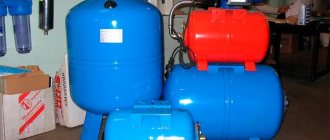0
2132
22.12.2015
Today, many are beginning to realize that the burning of fossil fuels will one day lead humanity to a dead end. At the same time, energy production from renewable sources cannot yet cover all the needs of the economy. What if we turn to the experience of our ancestors and use fuel of biological origin. After all, even in ancient China they knew how to extract biogas from natural raw materials. This fuel is in no way inferior in its physical properties to other types of fuel. So let's figure out how you can produce biofuel with your own hands.
Use of biofuels in the world
DIY methods
There are many options for producing biofuel at home. We will consider these options.
Biofuel from manure
Biofuels from manure are produced by fermenting organic waste. The mixture is placed in a special sealed bunker for a long time. As a result of the evaporation of the liquid, gas is released, which can be used for heating residential premises or for cooking and liquid fertilizer, which is the basis of organic farming.
Products grown using such fertilizers are environmentally friendly and their sales value increases compared to products grown using pesticides and other chemical fertilizers.
Biogas production
The second product that we obtain as a result of manure fermentation is gas.
To obtain gas from this raw material, the following is used:
- manure;
- bird droppings;
- toilet drains;
- food waste;
- plant matter;
All raw materials must be crushed, otherwise the pipes intended for the removal of waste raw materials may become clogged.
You can also obtain gas at home. To do this, you need to purchase a gas-tight container. This container must be sealed, since air should not come into contact with the resulting gas.
Then you need to place the raw material (manure) inside this container, heat it a little and wait 5 days. Then, collect the resulting gas in a container and use it at your discretion. You can assemble a device for producing biogas yourself, or you can purchase it from a company that specializes in selling this equipment.
Coal for creating biogas
To create biofuel, charcoal can also be useful, the same coal that we cannot do without in nature when frying vegetables and barbecue. You can buy it at the store, or you can make it yourself.
Coal can be made at home in 2 ways:
- in a barrel;
- in a hole;
Let's consider each method separately. And after that you will be able to make coal yourself.
To make charcoal in a barrel, you will need, strictly speaking, a 200 liter barrel. At the bottom of the barrel we make a fitting for pumping oxygen. Then we build a fire in a barrel, gradually adding logs.
When the barrel is half filled with firewood, we begin to pump in oxygen. To do this, you can use a vacuum cleaner. After this, the amount of smoke will decrease and the fire will burn better. When the logs burn out a little, you need to close the barrel with a lid and cover the existing cracks with wet clay or earth. We wait until the barrel has cooled completely and the charcoal is ready.
To make coal in a pit, we need to dig a hole, the diameter of which will be 0.8 m with sloping walls, and light a fire in it. But before you light a fire, take a sufficient amount of logs, dried wood, and tree branches from which you will get coal.
Place the wood in the fire tightly and gradually in layers, one after another. Wait until the firewood is completely burned out (this will take about 3 hours), then cover the logs with moss or dry leaves, sprinkle with earth and tamp everything down well. After 2 days the coal will be ready.
Rapeseed biofuel
Oil and meal are obtained from rapeseed seeds received at the oil mill. Next, this oil enters a special installation, where, as a result of various chemical reactions, methyl ether - biodiesel - is obtained from rapeseed oil.
Before use, it must be filtered. This type of diesel fuel has better flammability compared to conventional diesel fuel.
What influences the production of biofuels?
What is crucial for those who set out to make their own biofuel at home is, mainly, the environment. After all, the higher the temperature, the more successful the necessary chemical reactions will occur, through which gas will be released. This was the main reason why the first equipment that produced biofuels at home was designed and put into operation in a warm climate region. However, even in cold conditions it is quite possible to produce biological fuel. It’s just that for this you will have to take measures to insulate the structure of the installation or introduce devices into its design for forced heating of the working chamber, for example, with hot water. In addition, the creation of the unit can be influenced by the raw materials themselves, which must decompose efficiently and quickly and contain a lot of liquid. It should be free of cleaning agents and other preparations that greatly slow down the decomposition process, thereby killing anaerobic bacteria that carry out the fermentation process.
Varieties and advantages
Today, there are 3 types of biofuels:
- liquid;
- hard;
- gaseous;
Liquid biofuel
It is the most discussed species. After all, the life of modern man depends on oil; without it, humanity cannot survive, and oil is a fossil resource and at some point its reserves will run out.
Liquid biofuels have the potential to replace this fossil resource.
Liquid biofuels include:
- alcohols (ethanol, methanol, butanol),
- biodiesel,
- biofuel oil,
- esters;
Solid
This mainly includes wood (wood processing waste and fuel pellets, briquettes). The source for obtaining them is usually forests where grass, shrubs and trees grow.
Gaseous fuel
Includes biogas, hydrogen.
Also, biofuels can be classified by generation. There are biofuels of 1st, 2nd, 3rd and 4th generations:
- The 1st generation includes biofuels obtained by processing agricultural plants into biodiesel and ethanol.
- 2nd generation – biofuel obtained from food waste.
- The 3rd generation of biofuels includes biofuels obtained using introduced technologies as a result of the destruction of biomass.
- The 4th generation of biofuel is produced on lands unsuitable for agriculture and without destruction of biomass.
Another classification of biofuels is the division of biofuels into primary and secondary. Primary biofuel refers to biofuel that has not been processed. To the secondary – processed. Recycled biofuels undergo a variety of modifications before use and can be in solid, liquid and gaseous forms.
Advantages
The advantages of biofuel are as follows:
- Mobility. Biofuel has the ability to be produced anywhere in the world, regardless of climatic conditions and topography, because this type of fuel can be produced from various organic compounds.
- Renewability. Since biofuel is obtained from a variety of organic compounds of plant or animal origin, for example, manure, its quantity will not run out.
- Environmentally friendly. It is a cleaner type of fuel and, when burned, emits fewer harmful substances into the air than fossil fuels.
- Caring for the environment. Biofuel production solves problems associated with waste disposal.
What is biofuel
The energy hidden in plant matter is practically inexhaustible, because its source is our sun. Plants know how to use the energy of the sun, processing it for their growth. In turn, animals and birds receive energy by eating biomass, while producing waste products. By definition, biofuel is a fuel obtained from raw materials of plant or animal origin, as well as waste products and various industries associated with the processing of biomass.
Modern technologies make it possible to obtain biofuel in three forms: solid, liquid and gaseous. We encounter solid fuel in life most often in the form of pellets and various briquettes obtained by pressing. Liquid fuel - biodiesel - is still rare in the countries of the post-Soviet space, this is due to the presence of a large amount of fossil hydrocarbons at an affordable price. While obtaining liquid biofuel from vegetable oil is quite expensive and technologically difficult.
The production of combustible biogas is much simpler and cheaper, as a result of which it is gaining increasing popularity. Owners of livestock and poultry farms are increasingly thinking about purchasing a biogas plant, because they have at their disposal a huge amount of litter and manure, which is perfectly suitable for this purpose.
It makes no sense to list here all types of plant raw materials for processing into fuel, their sources and production technology. We are only interested in those types of biofuels that can be successfully produced at home without investing large amounts of money. Here they are:
- biogas extracted from waste products of domestic animals and poultry;
- briquettes from various plant wastes;
- charcoal.
Of course, if you try really hard, you can make pellets, eco-diesel, and even eco-gasoline yourself. People do such things as a hobby, spending years of their lives and often considerable money on it. Such complex technologies are inaccessible to a wide range of users, and therefore we will not consider them.
Usage
Biofuel for fireplaces
Installing traditional fireplaces requires chimneys. Often, this cannot be done in ordinary apartments. And here biofireplaces with special biofuel for them come to the rescue. Biofuel for fireplaces consists of a mixture of ethanol with impurities. Before ignition, it is poured into a special metal block and lit with a special long match.
When burned, it releases carbon dioxide in a safe amount and water, which helps humidify the air in the room and is not dangerous to humans. However, certain safety precautions must be observed to ensure that the use of biofireplaces and biofuel is safe.
Namely:
- Do not add biofuel to the flame , this will lead to a fire. It should only be added to a cooled burner.
- light a fireplace only with a special lighter or a long match.
- To store biofuel, use the manufacturer's packaging and do not transfer it to another container.
- If bio-fireplace liquid is spilled, you must thoroughly wipe the floor and ventilate the room, and only then start lighting the fireplace.
While burning biofuel for fireplaces, you can enjoy the sight of beautiful and even flames that look no different from the flames of burning wood.
Biofuel for fireplaces can be produced in the form of a gel. This gel contains sea salt, which gives the burning sound - the crackling sound characteristic of burning logs.
Main features of biofuel:
- When burned , biofuel emits very little soot.
- The flame in a biofireplace has an orange tint, so special additives are added to biofuel, which give the orange naturalness of the flame.
- Biofuel can be better used in a kerosene lamp, since it does not emit soot and odor characteristic of the combustion of kerosene.
Biofuel for fireplaces comes in 3 main types:
- Biodiesel (obtained from various oils or food processing waste).
- Bioethanol (usually used for biofireplaces in the form of a colorless, odorless liquid).
- Biogas (gas obtained from waste that has undergone special treatment).
When choosing biofuel for fireplaces, you should remember that biofuel must have quality certificates from research institutions.
Biofuels for greenhouses
Horse manure can quickly flare up to 60 degrees, then cool to 33-38 degrees and maintain such a high temperature for 2.5-3 months.
Heating a greenhouse with gas during the global crisis is expensive. That is why people are increasingly turning to renewable energy sources.
One of the best types of biofuel for a greenhouse is horse manure.
Cattle manure has a lower heating temperature due to its higher density and humidity. Therefore, to speed up heating, sawdust, dry leaves and other materials are added to it, increasing the looseness of the manure.
Plant-based biofuels for greenhouses are:
- Straw. To obtain biofuel, straw is mixed with a mineral-nitrogen fertilizer complex. However, it only has the ability to provide short-term heating.
- Sawdust. This type of biofuel is not widely used as biofuel for greenhouses, since when it comes into contact with water, it releases formaldehyde, which poisons water sources.
- Bark.
- Tree leaves. As a rule, tree leaves are mixed with manure, straw, and grass. In order for the biofuel from the leaves to heat up, it is necessary to add a nitrogen fertilizer complex to it.
- Grass.
- Linen fire.
- Waste from the cotton industry.
To obtain high-quality biofuel for a greenhouse, it is necessary to mix horse manure with straw or cow manure in a 50/50 ratio, horse manure with food waste or bark or sawdust in a 70/30 ratio, or cow manure with sawdust or wood leaves in the same ratio. 70/30.
Attention! The heating power of biofuel is small, so this type of fuel is not suitable for heating large greenhouses where people can walk freely; it is better to use it as heating for buried greenhouses.
Biofuels for cars
An alternative fuel for cars is biofuel.
There are the following types of biofuel for cars:
- bioethanol;
- biomethanol;
- biobutanol;
- biodiesel;
Some countries have already started using biofuels mixed with gasoline.
The most popular type of biofuel used in cars is ethanol. This type of gas is obtained by processing foods containing a lot of sugar or starch, such as sugar cane, corn, potatoes, sugar beets or barley, and mixed with gasoline in a ratio of 10% tanol to 90% gasoline.
The next most popular is biodiesel. It is obtained by processing plants that contain a lot of oil (soybeans, rapeseed or sunflower). Obtaining this type of fuel is more expensive.
To do this, it is necessary to grow plants, then collect and process them into a high-quality product and sell them in a short time, since biodiesel is good for 3 months, and then it will begin to decompose. All this requires large material costs. In everyday life, biodiesel is used diluted with gasoline.
The use of biofuel in a car's fuel system helps keep the car's system clean, since when burned, ethanol dissolves fumes, and this, in turn, increases the car's fuel consumption by about 6%.
Do-it-yourself biofuel: production features, pros and cons of self-production
Are you interested in information on how to make biofuel with your own hands and how possible it is? Then read below about what biofuel is, what raw materials it can be obtained from, and what technologies are used for this.
The issue of providing one’s personal household with the energy resources necessary for its functioning is a problem that, to one degree or another, faces any owner. Often the difficulties even lie in the impossibility of providing appropriate communications, for example, in the absence of gas distribution networks in the area of residence. But still, if we look at everything holistically, the main problems are high energy tariffs, which often call into question the profitability of homestead farming. Unfortunately, even the fall in prices for basic energy sources on the world market does not in any way affect the end consumer - tariffs remain at the same level and even tend to increase.
DIY biofuel
Naturally, in such a situation, more and more owners begin to think about the possibilities of using alternative energy sources. In particular, there is a lot of talk now about biofuels - high-calorie energy carriers (liquid, solid or gaseous), which are obtained by processing raw materials, often literally “lying underfoot.” In particular, many are interested in the question of how realistic it is to produce such biofuel with your own hands, in the conditions of a small private farm.
There are many opinions on this matter, even to the point that setting up such a mini-production is literally “a piece of cake.” Can such optimistic assurances be trusted? Most likely not - any biofuel will require special, often very expensive equipment, the necessary knowledge and skills, and a constant source of raw materials. Let's take a closer look...
What is biofuel and where does it come from?
Almost all energy resources mined on the planet are the product of many years of natural processing of organic matter. Complex biochemical processes that occurred in layers of obsolete plants and in the remains of animals, under the influence of external factors (temperature, pressure), over time led to the formation of coal deposits, oil-bearing strata, and the accumulation of flammable gases in the soil. It is these natural resources that are to this day the main energy carriers used by humans.
Energy extraction is often carried out in the most extreme conditions
The problem is that all these resources are not unlimited, and their quantity decreases from year to year. Their restoration practically does not occur (this takes many millions of years). All of them, the overwhelming majority, lie at great depths, often in hard-to-reach places (in the Arctic regions or on the sea shelves), their extraction requires the use of complex technologies, and in addition to this, transportation issues also pose considerable difficulties.
In a word, such problems will obviously only grow over time, and humanity has no choice but to consider the possibilities of alternative energy sources. Bioenergy is currently considered one of the most promising areas.
In fact, the laws of biochemistry do not change, organic matter is a renewable type of raw material, so why not carry out the same processes for obtaining energy resources artificially, in a short time? Moreover, not only specially grown crops can be used as raw materials, but also a variety of biological and technological waste, simultaneously solving the issue of their disposal.
Raw materials for biofuel production are often literally lying around underfoot
The table below schematically presents the main directions in the production and associated use of biological fuel. It must be said that such approaches can be used both on a large scale and in fairly isolated, autonomous systems, for example, medium or small agricultural complexes.
| Feedstock for processing | Technological lines | Resulting product | Recycled or recycled product |
| Agricultural and livestock waste, residual products from feed production | Biogas production plants | Biogas (biomethane) | Providing livestock complexes with “free” electricity |
| Providing autonomous heating | |||
| Environmentally friendly organic fertilizers | |||
| Industrial crops with high oil content (sunflower, rapeseed, soybeans, corn, etc.) | Processing lines | Bioethanol (alcohol) | |
| Vegetable technical oil | Biodiesel | ||
| Agricultural waste (crop production and food production) | Distillation and pyrolysis plants | Gaseous fuel (pyrolysis gases) | Electricity |
| Thermal energy | |||
| Liquid fuels (alcohols) | |||
| Wood processing industry waste | Pyrolysis plants | Gaseous fuel (pyrolysis gases) | Electricity |
| Thermal energy | |||
| Granulation plants | Fuel briquettes (pellets) |
Some countries with developed agricultural infrastructure are elevating biofuel production to the rank of global national programs. A striking example is Brazil, where the introduction of technologies for the production of alternative fuels is proceeding by leaps and bounds, and it is likely that this country will soon be able to claim the title of one of the largest suppliers of such energy resources.
In Brazil and many other countries, biofuel dispensers no longer surprise anyone
However, let's return to our “native lands”. In our conditions, it is also quite possible to produce almost any type of biological fuel, using either raw materials specially grown for these purposes, or using technologies for processing waste from agricultural, food production, logging or wood processing industries. In particular, we can consider the process of creating liquid biofuel (biodiesel) and solid (fuel pellets).
Prices for fuel blocks and biofuel for biofireplaces
Fuel blocks and biofuel for biofireplaces
Biodiesel production
Advantages of biodiesel and the basics of its production
Is it possible to obtain diesel fuel - diesel fuel, a product obtained by rectification, that is, direct distillation of oil - from plant raw materials? It turns out that it is quite possible, since the molecular structure of vegetable and animal oils is very similar to classic diesel fuel.
These are, in fact, the same “long” hydrocarbon molecules, but not in a free linear state, but connected in “triads” by a transverse framework of fatty acids - glycerol. This means that in order to extract the energy component that burns from the oil, you need to clean it from glycerin. This is what the technological process for producing biodiesel consists of.
Biodiesel from different types of oil
The result should be a yellow (with possible variety of shades) liquid that does not have that specific odor that is characteristic of the usual diesel fuel. However, this is a ready-made fuel that can be used both in pure form and as an additive to “classic” diesel fuel. Interestingly, conventional diesel engines do not require any modification when switching to even pure biodiesel.
(More often, due to the high freezing point, biodiesel is used in a mixture with conventional diesel fuel, and the resulting fuel is usually designated by the letter symbol “B” with a number that shows the percentage of the biological component of the fuel from the total volume. For example, the most common fuel “B20” - 20% biodiesel and 80% diesel fuel).
At the same time, such biological fuel, while not lagging behind in its calorie content, even differs in many ways from the petroleum product for the better:
- This fuel has a pronounced lubricating effect, which significantly extends the life of diesel engine parts.
- This fuel contains practically no sulfur, which oxidizes the engine oil, quickly rendering it unusable, “eats” rubber seals, and is simply extremely harmful to the environment, where it ends up as a result of exhaust.
- The flash point of biodiesel is significantly higher than that of conventional diesel fuel (about 150 °C). This means that biological fuel is much safer in storage, transportation, and use. The toxicity of such fuel is much lower than that obtained from oil refining.
- One of the basic indicators of diesel fuel is the “cetane number”, which shows the ability of hot fuel to ignite during compression. The higher it is, the higher the quality of the fuel, the smoother the engine runs and the less its parts wear out. If for conventional diesel fuel this indicator starts from 40 - 42, then for biodiesel the cetane number is lower than 51 and does not occur (by the way, according to European quality standards, the cetane number in any diesel fuel used in the European Union must be brought to no lower than 51) .
The disadvantages of biodiesel include a higher temperature at which crystallization begins (usually such fuel requires preheating) and a relatively short shelf life of the finished product (usually up to 3 months).
High-yielding oil-containing crops, such as sunflower, soybeans, and corn, are used as raw materials for the industrial production of technical vegetable oil and then biodiesel.
Products for the production of technical vegetable oils - raw materials for the production of biodiesel
Rapeseed has recently begun to gain particular attention among farmers because of its extremely high yield, unpretentiousness, and in addition, of all the listed crops, it depletes the soil to a much lesser extent.
One of the most promising industrial crops is rapeseed
However, the trends in the development of biodiesel production are such that it is considered inappropriate to occupy valuable crop areas for it, which may be more in demand for food purposes. The most promising direction is becoming farms for growing special types of green algae, which grow extremely quickly and produce biological material with excellent energy content.
From green algae to complete fuel
When certain conditions are created for the growth and vital activity of algae in artificial reservoirs (bioreactors), they actively accumulate vegetable fats and sugars, which then, during the processing process, become the initial product for producing flammable hydrocarbons. By and large, only the equipment itself is expensive, and algae only need water, sunlight and carbon dioxide for active growth.
This is what plants producing biodiesel from green algae will look like
Other oils are also used for the production of biodiesel - palm, coconut, as well as animal fats, usually in the form of waste from the processing or food industries.
What is the process of “severing” the hydrocarbon chain from the unnecessary glycerin base? You just need to replace this dense binder with another, more chemically active and volatile one. Methyl alcohol (methanol) is optimally suited as such a reagent. It itself is a highly flammable substance and even in some cases can be used as a completely separate type of fuel, so it will not in any way reduce the properties of biodiesel.
The chemical process of displacing the glycerol component (in the scientific literature this procedure is called transesterification) must occur on its own, but it is not irreversible - the substance can go both to the required state and again to its original state. In order to avoid such instability and to speed up the process, a catalyst is used. Alkalies (NaOH or KOH) are most often used as it. To ensure maximum uniformity of the exchange process, the mixture being processed is subjected to constant stirring and heating to a temperature of about 50 degrees.
Typically, depending on the volume and quality of the starting products, the process can last from 1 to 10 hours. As a result, the mixture should give a pronounced separation. In the upper part of the reactor (the vessel where the process took place) a light fraction remains - in fact, biodiesel itself. At the bottom there is a pronounced dense mass - the glycerin component.
Composition separation after transesterification
Now all that remains is to separate the biodiesel and clean it from excess methanol and catalyst residues. The remaining glycerin fraction is also subjected to a purification process, since glycerin itself is a very valuable product with a wide range of applications.
Expert opinion: Masalsky A.V.
Editor of the “construction” category on the Stroyday.ru portal. Specialist in engineering systems and drainage.
The optimal dosage of components is considered to be as follows: to process a ton of vegetable oil, you will need 111 kg of methyl alcohol and about 12 kg of catalyst - sodium or potassium hydroxide. If the process technology is followed, the output should be approximately 970 kg (or 1110 liters) of finished purified biodiesel and 153 kilograms of glycerin.
You can, of course, write out a complex chemical formula, but it is unlikely to say anything useful to the reader. It is better to provide a visual flowchart of the production process to make it clear how difficult it is to carry out all operations efficiently.
Flowchart of a standard biodiesel production process
Vegetable oil is either pressed on site, or supplied ready-made, or fatty waste from food production is used. After the purification process, it enters transesterification reactors. There, through its own channel, the prepared mixture of catalyst and reagent, methanol, enters. Next, technological cycles of fraction separation and multi-stage purification follow. As a result, biodiesel and purified glycerin are delivered to the warehouse as the final product, and the recovered excess methanol is returned for reuse.
Is it possible to produce it yourself?
It would seem that everything is simple and clear, but it is in a well-thought-out technological line. But is it possible to make biodiesel yourself?
1. Firstly, you need to immediately clearly understand that this organization of such a mini-production will only be justified if there is a reliable and practically inexhaustible source of raw materials - vegetable or animal fats of the required degree of purification. For example, if it is possible to buy leftover used oil at food factories or catering establishments for a very low amount. Producing oil yourself by growing the appropriate crops for this or purchasing seeds for pressing - on the scale of a personal farm, such a prospect should not even be considered, since the business will obviously be unprofitable.
2. The next important aspect is the considerable complexity of working with chemical components.
- Alkaline compositions are very hygroscopic, instantly absorb moisture, that is, their storage becomes a considerable problem. This is also taking into account the fact that sodium and potassium hydroxides are extremely “aggressive” substances and easily react with most metals. Therefore, they can only be stored in stainless or glass containers, or polypropylene containers.
- Methanol will also create a lot of problems. First of all, you need to constantly remember its extreme toxicity - poisoning with such alcohol often ends in death. (Particular attention if there are people in the house with an addiction to alcohol - methanol in appearance and smell differs little from ethyl, “wine” alcohol). All work with methanol must be carried out with mandatory protection of the respiratory system, eyes, skin, and mucous membranes.
Of course, the reaction can be carried out with safer ethyl alcohol, but in the end the fuel turns out to be more dense and viscous, and its quality for refueling engines is significantly lower.
- Using the artisanal method, “by eye,” it is very difficult to maintain the correct dosage of the starting components and determine their quality.
— It is usually assumed that the above ratio of methanol and oil for the normal course of the reaction may be insufficient - this largely depends on the biochemical composition of the purchased raw materials. Therefore, methanol is always added in excess quantity, approximately 1:4 in volume ratio to oil. Unfortunately, it is impossible to calculate more accurately without laboratory tests.
— It was not for nothing that it was mentioned earlier that the raw materials must be of a certain degree of “purity” - if you use any resulting fat or oil waste at random, you may not only not get the required biodiesel at the output, but also seriously “screw up” the equipment. For example, if the oil contains too much water, it will simply destroy the catalyst, the process will get out of control, and soap will begin to form in the reactor instead of the expected biodiesel (so-called saponification). Moreover, if NaOH was used, then, most likely, it will be possible to “catch a glop” - the soap quickly thickens and fills the entire volume of the reactor, completely absorbing the unreacted oil.
At enterprises, special drying agents are used to remove excess water, which are then, after treatment, removed through filtration. You can, of course, remove water at home by simply preheating the oil to 110 ÷ 120 degrees - the water should evaporate and evaporate. However, heating the oil often leads to another “trouble” - an increase in the concentration of free fatty acids. This is the next point.
— The second weak point of the feedstock is the concentration of free fatty acids (FFA) - there are certain technological restrictions on their content. This disadvantage - an increased concentration of FFA, is usually characteristic of food production waste, that is, oils that have already been subjected to heat treatment, since these acids themselves are a product of the thermal decomposition of oils. When reacting with a catalyst, FFA turns into water and soap, the dangers of which were already mentioned above. On production lines, this issue is resolved by analyzing incoming raw materials and developing the appropriate recipe for the optimal percentage of catalyst.
So, the oil for processing must contain a minimum amount of water and FFA. But it is hardly possible to conduct the necessary laboratory research at home. That is, the manufacturer risks both the quality of the product and the safety of its own equipment very much.
3. The third “block of problems” is the equipment necessary for the process. Although there are descriptions and photographs of self-made “lines” for the production of biodiesel on the Internet, call them successful, convenient, etc. - does not work.
Unfortunately, homemade devices are still very far from perfect.
You can pay tribute to the authors for originality, for the use of the most unexpected parts and components, for example, old washing machines or refrigerators, for interesting solutions to the problems of separation and purification of the final product, but still claim some kind of “breakthrough” installation model recommended for self-production is not possible.
Video - An example of a homemade installation for producing biodiesel
One of the most complex and time-consuming processes is the separation of the glycerol-containing fraction from biodiesel, and then purification of the fuel from soap residues, alkaline components, and excess methanol. By the way, methanol is a very expensive raw material, and simply evaporating it into the atmosphere is extremely unprofitable. This means that with its increased volatility, special purification sealed chambers are needed to allow the distillation process to be carried out without loss.
The soap component is separated by settling, water washing, followed by filtration and evaporation of excess. To remove alkalis, acidified compounds (for example, acetic acid) are used.
Some home craftsmen prefer to install a special aeration column in which the biodiesel is settled and, with the help of air bubbles artificially created by a compressor, is cleared of chemical impurities. A similar example is given in the continuation of the video:
Video - How to make biodiesel
In a word, it is hardly possible to talk about high (or at least some) profitability of such handicraft production. The productivity of such installations is low, it is impossible to organize a continuous cycle, homemade equipment requires almost constant human control. And the quality of the resulting biodiesel is difficult to control. That is, for the needs of personal households, for refueling your own car (at your own peril and risk), you can use this, but won’t such fuel become more expensive than regular diesel fuel?
And if we consider the organization of biofuel production as our own business, then in this case we cannot do without purchasing special technological installations.
Many models of mini-lines for the production of biodiesel are presented to the attention of interested people
If you set a goal, it will not be so difficult to choose the necessary mini-production complex that optimally suits the available space. There are many similar technological installations presented on Internet sites, differing in power consumption, productivity, degree of automation, the number of operators required for servicing, and, of course, the cost of the equipment. Both domestic and European companies have mastered the production of biodiesel production lines.
Video: automated modular biodiesel production line
Solid biofuels - pellets
Lately, there have been a lot of rumors or even peculiar “legends” that one of the most promising and highly profitable types of small business could be the production of fuel pellets - a special type of biological fuel. Let's take a closer look at the advantages of solid granular fuel and the process of obtaining it.
Why and how are fuel pellets produced?
Logging, wood processing enterprises, agricultural complexes, and some other production lines necessarily produce, in addition to the main products, a very large amount of wood or other plant waste, which, it would seem, no longer has any practical value. Not so long ago, they were simply burned, emitting smoke into the atmosphere, or even decomposed carelessly into huge waste heaps. But they contain enormous energy potential! If this waste is brought into a state suitable for use as fuel, then, along with solving the disposal problem, you can also make a profit! It is on these principles that the production of solid biofuel – pellets – is based.
Pellets are extremely convenient to store, transport, and use
In essence, these are compressed cylindrical granules, having a diameter from 4 ÷ 5 to 9 ÷ 10 mm, and a length of approximately 15 ÷ 50 mm. This form of release is very convenient - the granules are easily packaged in bags, they are easy to transport, they are excellent for automatically supplying fuel to solid fuel boilers, for example, using a screw loader.
Pellet boilers have the ability to automatically supply fuel from the hopper
Pellets are pressed from natural wood waste, and from bark, branches, pine needles, dry leaves and other by-products of logging. They are obtained from straw, husks, cake, and in some cases even chicken manure is used as a raw material. In the production of pellets, peat is used - it is in this form that it achieves maximum heat transfer during combustion.
Pellets can be produced from a variety of materials
Of course, different raw materials also give different characteristics of the resulting pellets - in terms of their energy output, ash content (the amount of the remaining non-combustible component), humidity, density, and price. The higher the quality, the less hassle with heating devices, the higher the efficiency of the heating system.
Some pellets can be used not only as fuel, but also as fertilizer or soil mulching. Nevertheless, their main purpose is, of course, fuel for boilers, and here they have many distinct advantages over other types of solid fuel. For example, this is an absolutely clean type of fuel from an environmental point of view. No chemical additives or molding sands are used in the pellet production process.
Types of pellets and description
Expert opinion: Masalsky A.V.
Editor of the “construction” category on the Stroyday.ru portal. Specialist in engineering systems and drainage.
In terms of their specific calorie content (in volumetric terms), pellets leave behind all types of firewood and coal. Storage of such fuel does not require large areas or the creation of any special conditions. In compressed wood, unlike sawdust, the processes of rotting or burning never begin, so there is no risk of self-ignition of such biofuels.
Now - to the issue of pellet production. In fact, the entire cycle is simply and clearly depicted in the diagram (agricultural raw materials are shown, but this equally applies to any wood waste):
"Short course" on pellet production
First of all, the waste goes through the crushing stage (usually to the size of chips up to 50 mm long and 2 ÷ 3 mm thick). Then follows the drying procedure - it is necessary that the residual moisture does not exceed 12%. If necessary, the wood chips are crushed into an even finer fraction, bringing its condition almost to the level of wood flour. It is considered optimal if the particle size entering the pellet pressing line is within 4 mm.
Before the raw material enters the granulators, it is lightly steamed or briefly immersed in water. And finally, on the pellet pressing line, this “wood flour” is pressed through the calibration holes of a special matrix, which have a conical shape. This configuration of the channels promotes maximum compression of the crushed wood with, naturally, its sharp heating. At the same time, the lignin substance present in any cellulose-containing structure reliably “glues” all the smallest particles together, creating a very dense and durable granule.
Formation of pellets in a cylindrical matrix
At the exit from the matrix, the resulting “sausages” are cut with a special knife, which gives cylindrical granules of the required length. They go into the bunker, and from there into the finished pellet receiver. In fact, all that remains is to cool the finished granules and pack them into bags.
Scheme of operation of the device with a flat matrix
Matrices can be cylindrical or flat. The first ones are more productive and are used mainly in powerful industrial installations. On small granulators, which are more often used in individual households, they are usually installed flat.
Video: small production for processing wood waste into pellets
What about a “private owner”?
So, everything seems simple. But this “simplicity” is for established production, but is it worth starting such a process yourself?
1. First of all, you need to look around very carefully in terms of the source of raw materials for private production.
- If there is any woodworking plant (large workshop) nearby, and there you can get ready-made sawdust on an ongoing basis at “ridiculous” prices or even free of charge, as a pick-up option, then it’s worth a try. Most likely, all initial costs will soon be justified - it will be possible not only to fully provide oneself with granular biofuel, but also to sell the surplus.
If you manage to find such a supplier, then things will work out!
It is quite clear that having a pellet line will be very beneficial if the owner himself is involved in woodworking issues, and sawdust on the farm, as they say, “does not translate.”
- It’s worse if only large wood waste is available - in this case, you will have to think through the issue of crushing it, and this will already be extra costs for both equipment and electricity.
- If the calculation is based on voluntaristic assumptions - “whatever I find, I’ll process,” then, most likely, nothing worthwhile will come of it. Equipment for granulation is not cheap, and is unlikely to ever justify itself with this approach.
When assessing the possibilities of obtaining raw materials, the type of wood must also be assessed. It is hardly worth messing with poplar or willow - not only is the wood itself low in calories, it also does not sinter into granules well due to its low lignin content. Linden would not be a very good choice either. But sawdust from coniferous trees, due to the high content of resins, is suitable for all without exception.
2. The next important issue is the equipment problem.
Actually, there are no particular problems with this - there are many installations of varying power and performance, domestic, European or Chinese assembled, on sale. It’s probably impossible to call them cheap. Which of them is better or worse is also difficult to judge; it is better to delve into this topic in Internet forums.
Factory assembled pellet production machine
There, on the forums, you can find offers from craftsmen who manufacture custom-made granulators. They have developed schemes, their own drawings, experience in assembling and setting up installations. It is possible that the price of such a device will be much more attractive than the factory one.
Video: model of a granulator with a fixed flat matrix 4 kW
But as for self-production, the issue is very controversial. First of all, it is almost impossible to obtain ready-made drawings of such products, unless you copy them from an assembled device. Craftsmen who have mastered the production of such installations are unlikely to share all the nuances of design and assembly.
The second difficulty is that the moving and stationary parts in the granulation chamber experience enormous loads, and without the appropriate knowledge of strength materials and applied mechanics, it is almost impossible to correctly calculate them. Doing it “by eye” will not work.
The main parts of the granulator are the matrix and crushing rollers
The main parts - the matrix and crushing rollers - can be purchased ready-made. But to build the body itself, mount it on the frame, install an electric drive, think over a gear system with the required gear ratio, accurately fit all the parts and components - this requires the extraordinary abilities of a fitter, mechanic, milling machine, turner...
Of course, if you have complete confidence in your abilities, then you can try - there are examples on the Internet in which home craftsmen brag about their successes. Moreover, some even manage to get away from conventional schemes and change the design, making it simpler, but without losing installation capabilities.
Perhaps the video below will be a starting point for someone in developing and manufacturing their own pellet granulator:
Video: how a compact pellet granulating machine works
In conclusion, the following can be noted.
In the scope of one publication, it is simply impossible to even briefly go through all modern methods of producing biofuel. Thus, the issues of production and use of biogas from animal waste and the production of bioethanol from plant raw materials deserve separate articles. If the reader has interesting information on these issues, we will be happy to publish it on our portal. In any case, these topics will not be left without consideration either.
Stay tuned!
Why is it better to use biofuel?
Biofuels are an alternative, renewable source of energy on earth.
Its main advantages are as follows:
- Affordability allows the use of this type of fuel in all spheres of human life.
- Renewability. One of the important advantages over gasoline is the ability of biofuels to renew.
- Biofuels help slow global change. Its use reduces the greenhouse effect (up to 65%)
- Biofuel producing countries are decreasing their dependence on imports of this product.
- Excellent refueling for your car.
Benefits of biofuels
Everyone knows that any invention is a well-forgotten old one. So, biofuel is far from a discovery of our time, since they knew how to produce it back in Ancient China. At that time, plant tops, grass, various wastes and manure were used as starting materials. There are many advantages of such raw materials, so it is worth familiarizing yourself with the main ones.
Low cost
In the modern market, biofuel is equal in cost to gasoline. But it is cleaner and produces minimal harmful emissions. When using such fuel, it is possible to significantly reduce the maintenance costs of those units where it is used.
Renewable sources
Fermentation of manure in the device
As you know, gasoline is obtained from oil, which is a non-renewable resource. And, despite the fact that oil reserves will last for more than one decade or even a century, it will eventually run out sooner or later. In turn, biofuels are made from raw materials such as:
- manure;
- waste of cultivated and wild plants;
- the plants themselves in the form of soybeans, rapeseed, corn or cane;
- wood and so on.
All of them tend to be constantly renewed.
Reducing emissions
During combustion, fossil fuels (coal, natural gas, peat) produce significant amounts of carbon dioxide, which scientists call greenhouse gas. The use of oil and coal increases the temperature of the atmosphere, which is one of the causes of so-called global warming. To significantly reduce the greenhouse effect, biofuels should be used.
Studies have shown that biofuel significantly reduces greenhouse gas emissions by up to 65%.
As you know from a school botany course, when growing plants, carbon monoxide is partially absorbed from the atmosphere and oxygen is released into the atmosphere. This makes the use of biofuels even more attractive.











